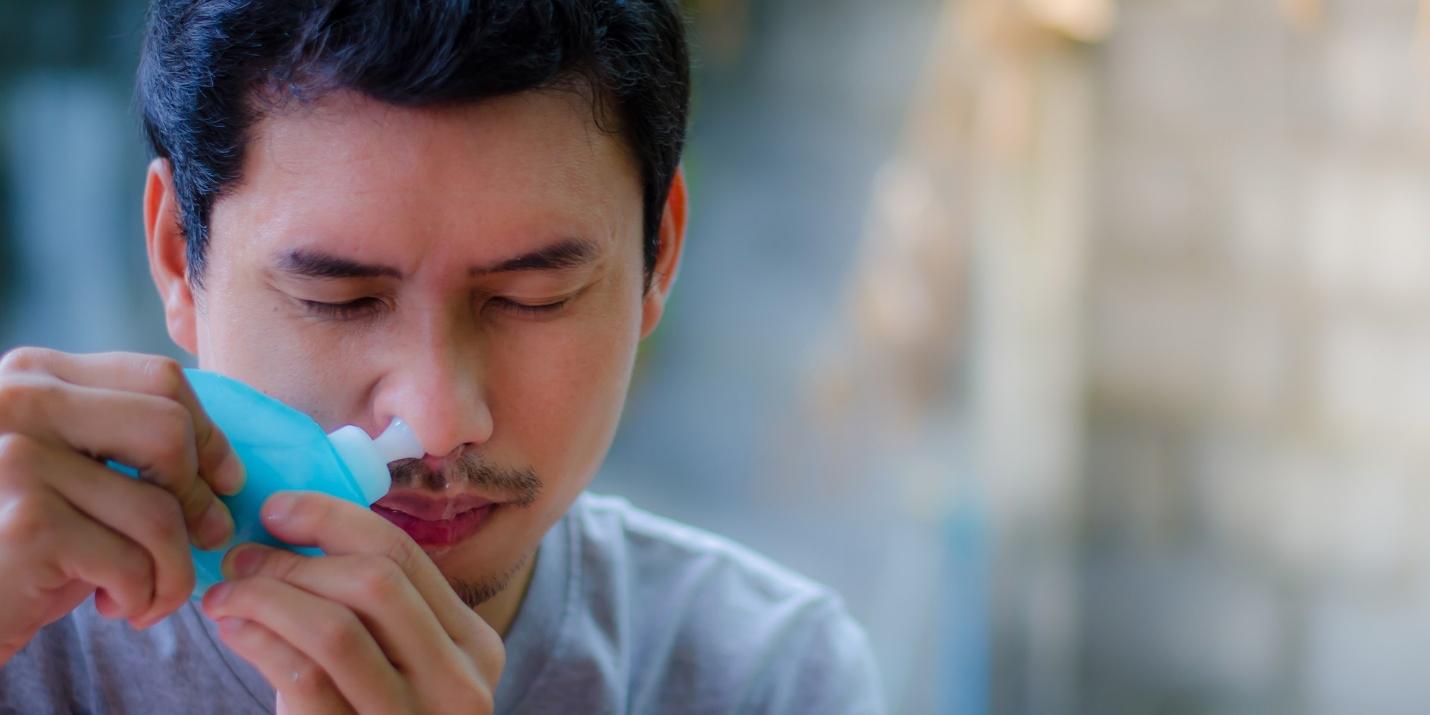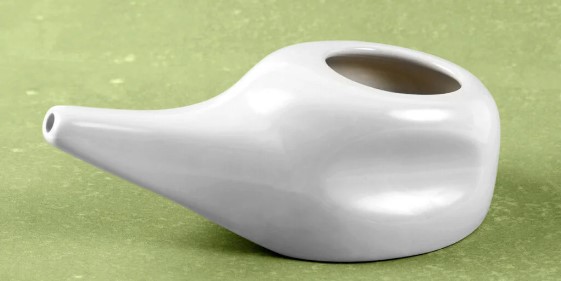Neti pots are little, teapot-like gadgets used for sinus rinsing. When used appropriately, they are harmless, but inappropriate use may result in sinus problems. Neti pots have grown in popularity among sinus patients during the last decade. They are also used to treat cold symptoms and different allergies. However, nasal rinses and neti pots are safe if used properly.

Nasal Rinsing and Neti Pots: Is it safe for Nasal Irrigation?
Overview
Many people suffer from the flu, sinusitis, and other problems that cause discomfort and block sinuses. A few turn to nasal saline rinsing for comfort. It is a technique that employs a solution of salt water to wash out their nasal passageways. According to the FDA, Neti pots are not considered a risk. However, patients are advised to use the Neti pots appropriately to avoid associated complications.
However, there are various techniques of nasal rinsing. Among the most common is the neti pot, which resembles a little teapot. Nasal rinsing with a neti pot has been widely practiced for generations, and its popularity is growing in the United States. The neti pot was inspired by the Ayurvedic practices.
What are Neti pots?
The neti pot is a gadget that uses saltwater solution for nasal irrigation. The person prepares a saline solution in a neti pot and pours it into a single nostril by moving their head upward. The solution enters one nostril and exits the other. You can also prepare a saline rinsing solution using table salt. Nasal rinsing finds its origins in Indian Ayurvedic medicinal techniques. It is an efficient technique to minimize nasal clogging caused by various factors.

How to use Neti pots for Nasal Rinsing?
The FDA stated that certain neti pot manufacturers might give inaccurate and insufficient information. Some people don't even know how to use a neti pot safely. Follow the directions below.
- First of all, make sure that you use only sterilized water. A person may use distilled water or sterilized water from the market. You must boil the water for 3 minutes at heights over 6,500 feet.
- Fill the neti pot halfway with the water and pour the salt solution
- Bend forward over the sink and tilt your head at a 45-degree angle
- Put the tip into one nostril and ensure that it comfortably closes the nostril.
- Lift the handle and let the fluid pour into and out of the opposite nostril.
- Half of the water should be used on one side. It should take 2-3 minutes for the water to pass via each nostril.
- Continue the above steps until nasal clogging gets better
- After the usage, wash the neti pot, giving special care to the area where the spout joins the pot. Salts can accumulate in this area of the gadget. Washing with tap water is generally safe, given that soap and hot water.
- To avoid spreading bacteria to a friend, avoid sharing a neti pot with anybody else.
- If it is a plastic neti pot, it must be replaced every couple of months.
Instructions Regarding the Use of Neti Pots for Nasal Rinsing
Here are the dos and don'ts regarding the safe and effective use of neti pots for nasal rinsing and immediate comfort.
Things to do
Use Lukewarm distilled water
When using unsterile tap water, nasal rinsing might create major health complications. Tap water is okay to consume as well as bathe or shower with. It may, however, include germs, such as bacteria and amoebas, which can cause fatal infections in the nasal passageways. Your stomach may destroy these microorganisms because of its acid, but sinuses can't; they may grow and thrive there.
Always use distilled water, or you can also boil tap water for 4-6 minutes and let it cool down a bit to warm water. Moreover, you can get a bad headache after sinus rinse using cold water. In addition, if you use extremely hot water, it can backfire and can cause burns in the sinuses.
Gently blow your nose.
Blow your nose gently and tilt your head forward to the opposite of the side you are rinsing with the neti pot saltwater solution. To prevent pressure on your ears, gently blow your nose with the solution without fully pressing it. Sniff in the solution once or twice to eliminate blockage in your nasal passageway. You may need to spit many times as some solutions reach the back end of your throat. Open your mouth and keep breathing to avoid ear discomfort.
Clean neti pot after use
Always clean the neti pot and keep it safe after drying it. If the neti pot is made of plastic, then you must replace it every couple of months, just like a toothbrush.

Things to Avoid
Don't overuse it.
Use the neti pots for nasal rinsing as advised by a practitioner, as excessive use can irritate your sinuses, especially if you had sinus surgery. So, how many times a day can you do a sinus rinse? Once or twice for nasal cleaning is enough. Anything more than that is its overuse and it can expose you to sinus rinse dangers.
Don't use it if you have an ear infection.
Don't use the neti pots if you have an ear infection, as it might worsen the infection. Always talk to your practitioner before nasal rinsing in case of an ongoing ear infection.
Don't use it for infants.
Never use net pots for infants or children below two years of age. If your infant has clogged sinuses, take them to an ENT specialist, and don't ever do it yourself. The specialist will have the right-sized neti pot for the kid and clean the sinuses more effectively.
Conclusion
Neti pots have revolutionized nasal rinsing to give immediate comfort. They can aid in the clearing of the sinuses in situations of allergy or sinusitis. However, it is critical to utilize sterilized water along with the proper procedures. So, if you are wondering whether nasal rinsing and net pots are safe to use or not? Yes, they are safe, given that you strictly follow the safety instructions. If not done properly, a person may catch bacteria that can enter the brain and cause life-threatening disorders.




